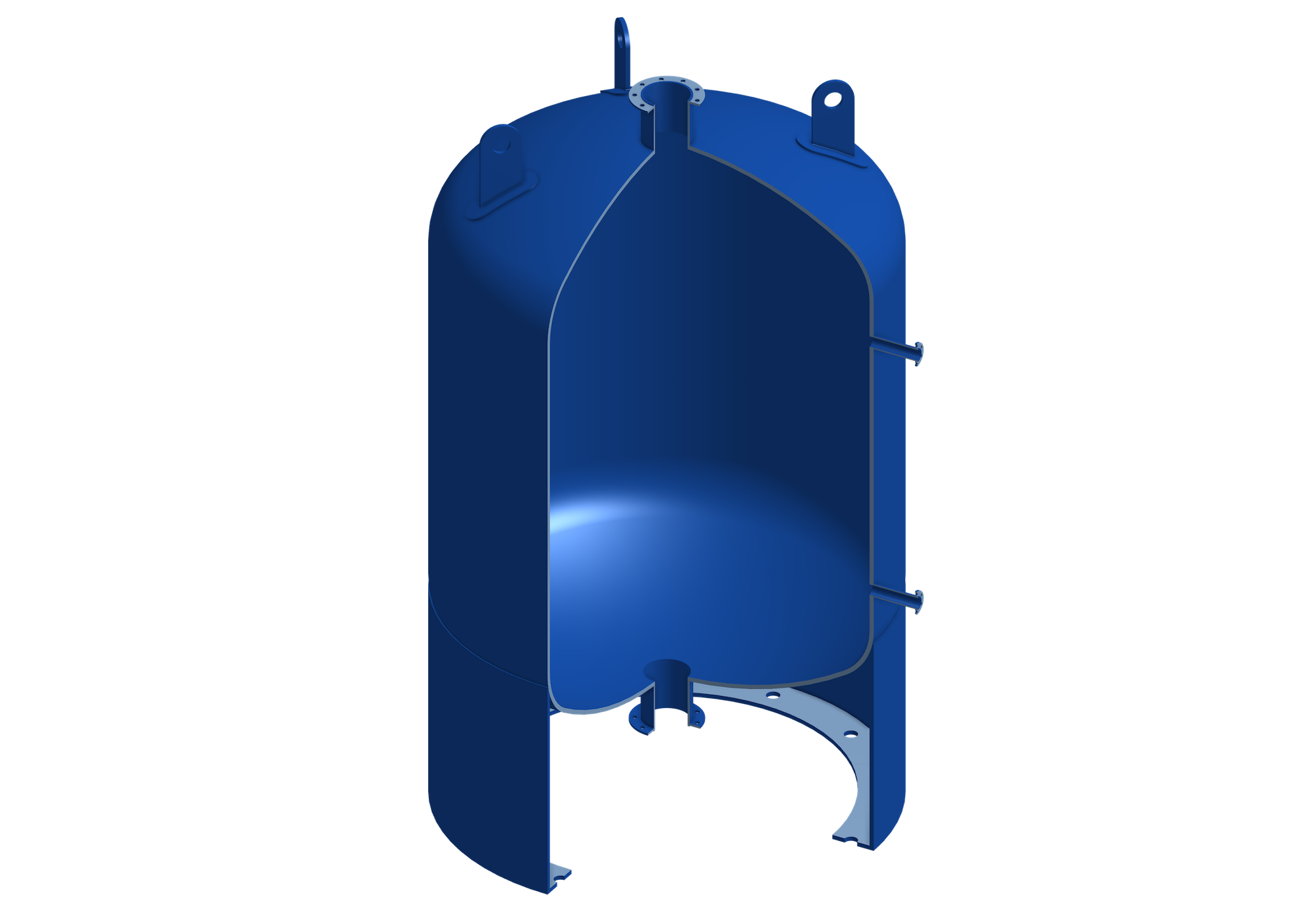Vessels

Vessels are used to hold liquids, gases and solids. They are used for various purposes within process plants where they are either integrated into the process and have process or operating media actively flowing through them, or they are used for the storage of media. The purpose of a vessel determines the requirements regarding the volume, the selection of the material, the pressure and temperature resistance, the shape, as well as the size and position of the connections for incoming and outgoing media and measurement instruments.
The selection of the material ensures that the media coming in contact with the vessel cannot be contaminated. If contamination of the media by the available material cannot be ruled out, a coating is applied if required to surfaces of the vessel coming in contact with the media in order to create a separation between material and media.
Regarding the volume of a vessel, a difference is made between the volume available for process purposes and the total one, which the vessel encloses. Commonly, the two values are not the same, with the volume available for process purposes being the smaller one. Reasons being the position of the connections for the level measurement or the connections for incoming and outgoing media.
For the evaluation of the pressure resistance of a vessel, in addition to the operating pressure, the hydrostatic pressure, which is caused by the contained medium depending on its density, is taken into account. Furthermore, the effects of load changes due to pressure and temperature oscillations are accounted for.
